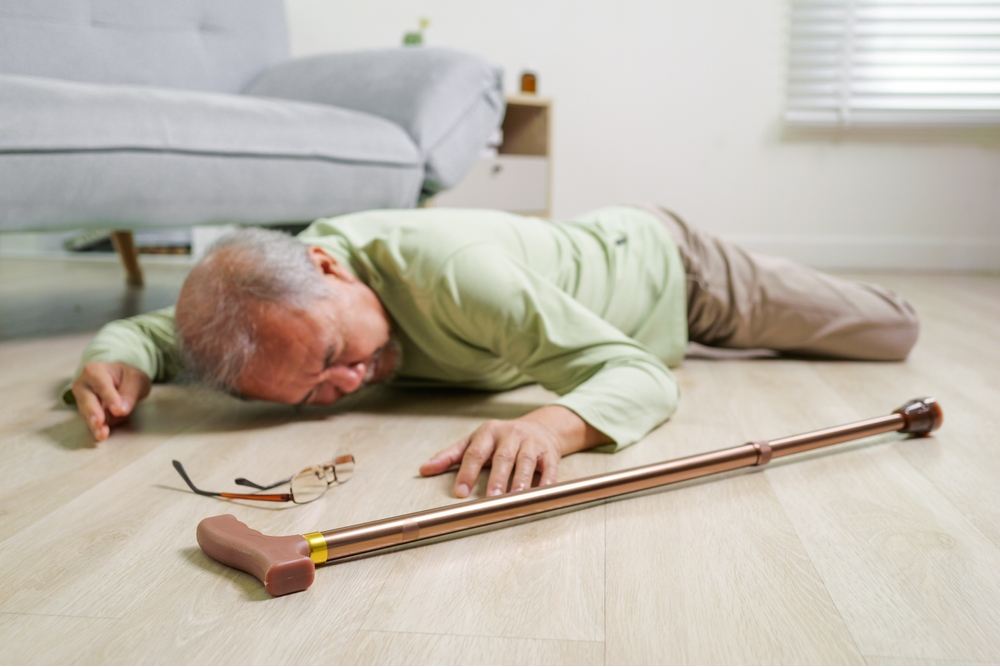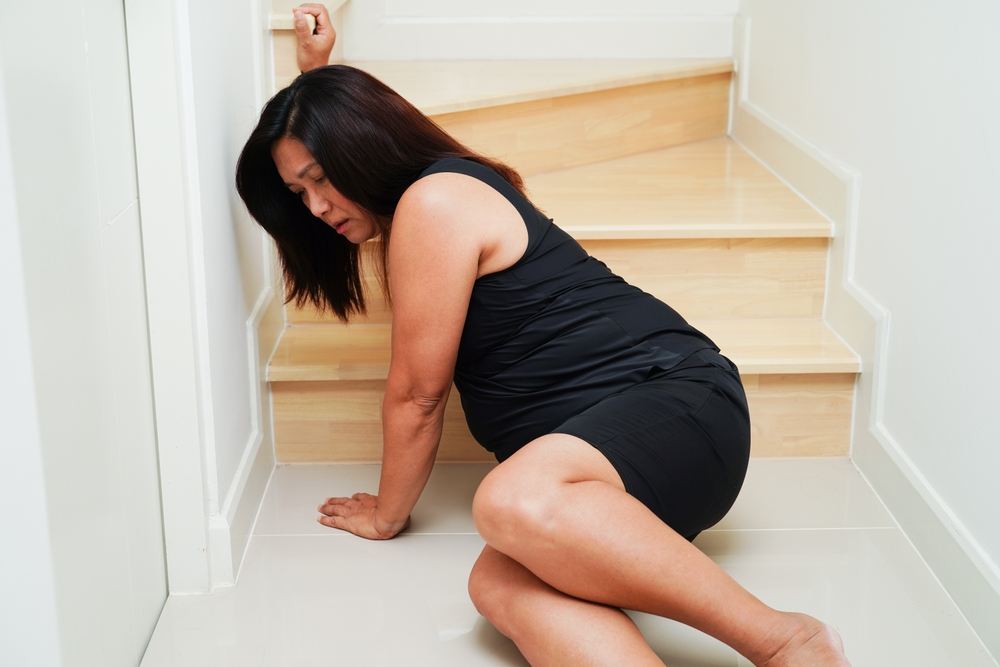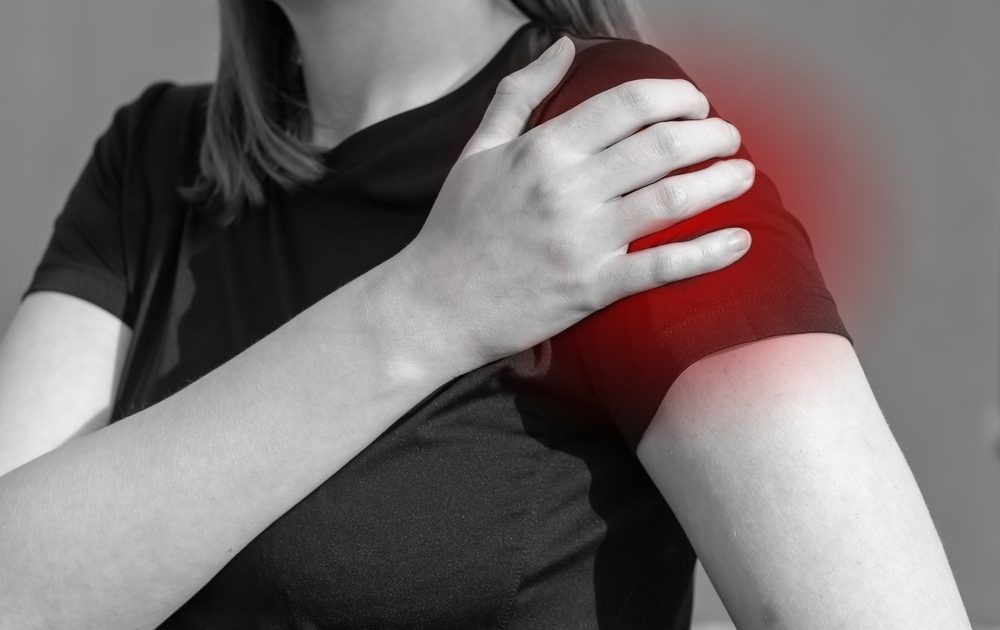 Each year, millions of older adults get treated in the emergency room for injuries suffered from a fall. One of the most common injuries for older adults includes home accidents like falls. As you age, if you were to slip and fall, you might be at greater risk for injuries like scrapes, bruises, broken bones, or joint dislocations. Older adults can lose muscle mass later in life, which can contribute to issues with balance and gait. Blood pressure issues can also increase the risk of falls when standing up after sitting or lying down. Issues with the inner ear and the vestibular system can also impact a person’s balance and lead to falls in older adults. Poor eyesight, poor hearing, and other illnesses or physical conditions can put older adults at more risk for slip and fall injuries. Here are some tips for reducing the risk of falls in older adults and what to do if you suffer a slip and fall injury.
Each year, millions of older adults get treated in the emergency room for injuries suffered from a fall. One of the most common injuries for older adults includes home accidents like falls. As you age, if you were to slip and fall, you might be at greater risk for injuries like scrapes, bruises, broken bones, or joint dislocations. Older adults can lose muscle mass later in life, which can contribute to issues with balance and gait. Blood pressure issues can also increase the risk of falls when standing up after sitting or lying down. Issues with the inner ear and the vestibular system can also impact a person’s balance and lead to falls in older adults. Poor eyesight, poor hearing, and other illnesses or physical conditions can put older adults at more risk for slip and fall injuries. Here are some tips for reducing the risk of falls in older adults and what to do if you suffer a slip and fall injury.
7 Tips to Reduce Slip and Fall Injuries
 While falls can become more common with aging, there are things you can do with your health and around your home to help reduce the risk of slip and fall injuries. Here are seven tips to reduce slip and fall injuries.
While falls can become more common with aging, there are things you can do with your health and around your home to help reduce the risk of slip and fall injuries. Here are seven tips to reduce slip and fall injuries.
Wear Appropriate Footwear
The shoes you wear can play a large role in helping prevent falls. Shoes that are loose-fitting, slip-on, backless, or high-heeled can increase the chances of a fall in older adults. Instead, opt for shoes with a rubber sole for a better grip on various floors and surfaces. Low-heeled shoes or those with flat soles can help prevent trips or slip-ups, unlike high heels. Lace-up shoes can also help reduce the risk of falls when worn and tied appropriately. You want to wear comfortable shoes that are not too tight or make walking too challenging or difficult.
Make Your Spaces Accessible
It is so important to make your spaces accessible and safe for older adults. Most slip and fall accidents happen at home, so creating a safe environment at home can be one of the best ways to prevent future incidents. Remove obvious tripping hazards in the home and consider carpeting or rugs for slippery floors. Secure rugs and floor mats with rug pads to help prevent them from sliding around, especially with rugs in the bathroom and on tiled floors. Adding non-skid surfaces to the bathroom, in the shower or bathtub, can also help reduce falls. Additional home modifications can include increasing lighting in dimly lit areas of the home and repairing any damaged or hazardous walkways or stairways in and around the home.
Focus on Staying Active & Strong
Staying active and exercising can also help reduce your risk of slip and fall injuries. When you exercise regularly, your muscles stay strong and can help you with things like balance and gait that can impact your stability. Older adults who live a more sedentary lifestyle are more likely to suffer falls, while those who participate in exercises and activities experience improvement in their health and mobility. Regular exercise can also help boost the body’s production of endorphins, which offer a myriad of health benefits, including healthy sleep, feeling energetic, and reducing stress. Low-impact exercises and activities like going for a walk or participating in a yoga class can help improve strength, balance, and confidence as you age.
Consider Assistive Device Options
In some cases, assistive devices may be recommended or required to help you move around safely and prevent future falls. Assistive devices may include items you can get installed around the home to make everyday movements and activities easier, like grab bars in the shower or handrails on both sides of the stairway. Other assistive devices may include a cane or walker to offer older adults a bit more stability while moving around. Your doctor may recommend specific assistive devices based on your specific issues with balance and mobility to help support you with daily activities.
Get Regular Eye Exams
Maintaining healthy vision as you age requires regular eye checkups with the doctor. The typical recommendation is to get a regular checkup and eye exam every two years with the ophthalmologist and once every year for adults over the age of 65. At-risk seniors may need to see their eye doctor more often, especially if they suffer from any health or eye conditions that may impair their vision. Reduced vision or eye conditions that lead to impaired vision can increase your risk for trip and fall injuries. Eye doctors offer a variety of options for correcting your vision, including up-to-date glasses or contact prescriptions, or surgical interventions like cataract repair.
Pay Attention to Medication Side Effects
It’s no secret that older adults typically take more medications with age. Be sure to check with your doctor or pharmacist about all your medications before starting something new to prevent any potential issues or to learn about side effects. Many medications can come with side effects that can put you at higher risk for slip and fall injuries. Medications that cause drowsiness or dizziness can leave you feeling unstable on your feet. You should always get your prescriptions refilled regularly to avoid any lapses in medications, as a break from certain medicines can also increase your risk for uncomfortable side effects.
Don’t Hesitate to Ask for Help
It can be difficult for older adults to ask for help. You have been taking care of others and have lived a full, independent life. However, it’s important to recognize when you have limitations, especially when something might put you at risk for injury. Asking for help can look like getting necessary home improvements made to make your spaces safer and function better for you. It can also look like getting additional in-home care or support with things like taking medications on time or rides to the doctor’s office. Partnering with family, friends, or local senior services can give you peace of mind in knowing that you have others looking out for your best interests.
Common Slip and Fall Injuries
 Not all falls will lead to an injury, though it is best to get checked out by a doctor after a fall just to be sure you aren’t dealing with something serious. Even a slight bump on the head could be cause for concern in some adults, so it’s better to be careful rather than take a risk that could lead to health complications. Here are examples of common slip and fall injuries that happen in older adults:
Not all falls will lead to an injury, though it is best to get checked out by a doctor after a fall just to be sure you aren’t dealing with something serious. Even a slight bump on the head could be cause for concern in some adults, so it’s better to be careful rather than take a risk that could lead to health complications. Here are examples of common slip and fall injuries that happen in older adults:
Scrapes & Bruises
Many people who slip and fall end up with a few scrapes or bruises, no matter what age. Whether you catch yourself with your hands outstretched and scrape up your palms or scrape a knee on the ground, small cuts can happen. Bumping into objects in the home can also cause bruising, also known as a contusion. If you fall, you can also develop serious bruising around the area that hits the ground, like your hips or knees.
Broken Bones
As you age, your bones can become more brittle, and that makes them more susceptible to breaking. A broken bone, also known as a fracture, can occur from falling on an outstretched arm or if you twist and turn as you fall. Commonly broken bones with slip and fall injuries include a fracture to the collarbone, wrist, arm, ankle, and leg.
Dislocated Joints
Joint dislocations can also happen with falls in older adults. The most common dislocations in older adults include the shoulder, knee, and hip joints. If you fall on your side, you could twist your knee on the way down or land on your hip, causing an injury to the joint. Falling on outstretched hands can also put too much pressure on your shoulder joint and lead to a dislocation.
Concussion
If you fall and bump your head, you could also be at risk for a concussion. Older adults should always get any bumps or bruises to the head checked out by a doctor to confirm or rule out a concussion. A slip and fall while getting out of bed could cause you to hit your head on a piece of furniture or the floor, leading to a minor traumatic brain injury. Concussions can cause a wide range of uncomfortable symptoms and require emergency medical attention as soon as possible.
Treatment & Rehabilitation from Slip & Fall Injuries
At AICA Orthopedics, our team of Lithia Springs doctors treats all kinds of slip and fall injuries. Our doctors include orthopedists, neurologists, chiropractors, and physical therapists who create personalized treatment plans for each person so you can receive quality, comprehensive treatment and care. We provide support through your recovery and rehabilitation from slip and fall injuries to help you get back on your feet, regain your strength, improve your mobility, and increase your confidence as you heal. Seniors and older adults can visit AICA Orthopedics in Lithia Springs for a trusted doctor near you for treatment and rehabilitation for slip and fall injuries.
